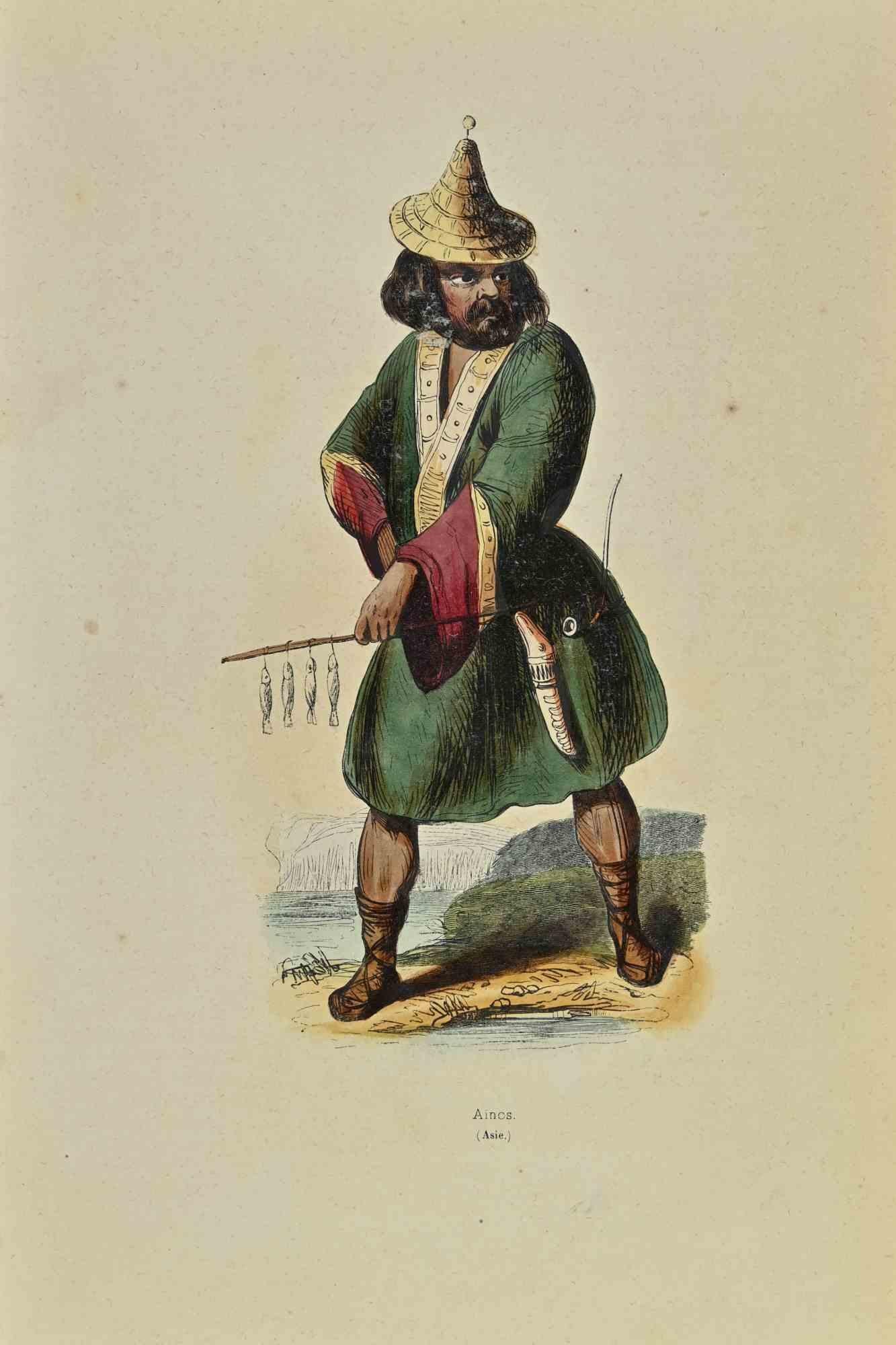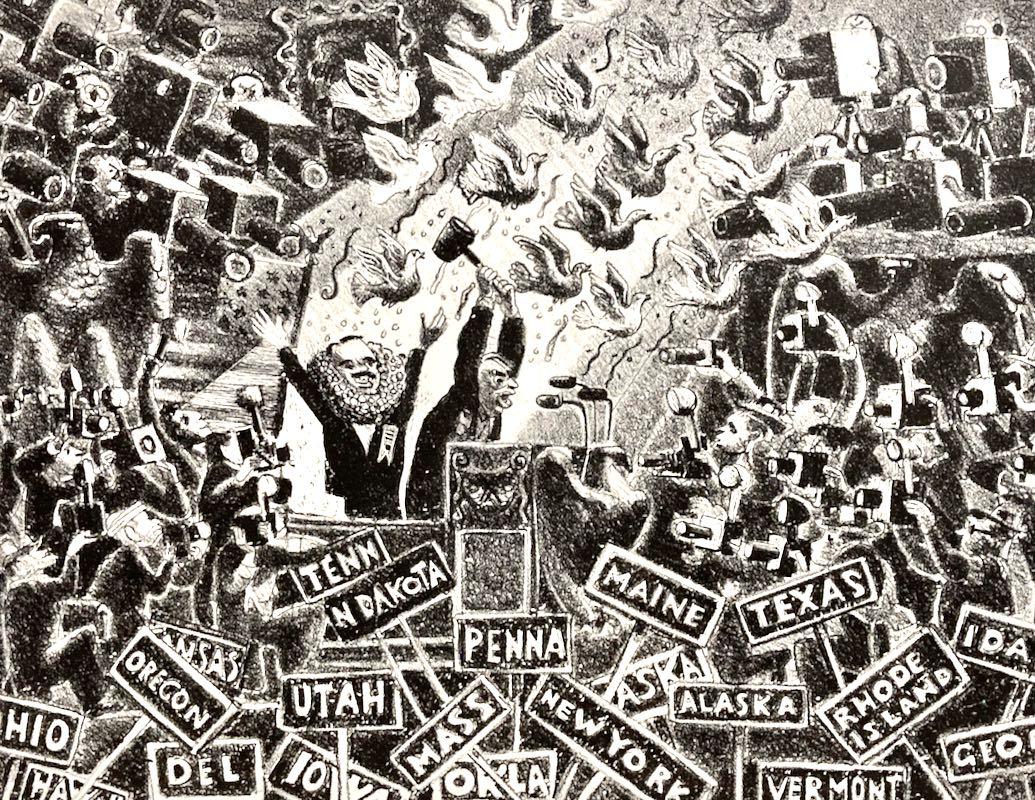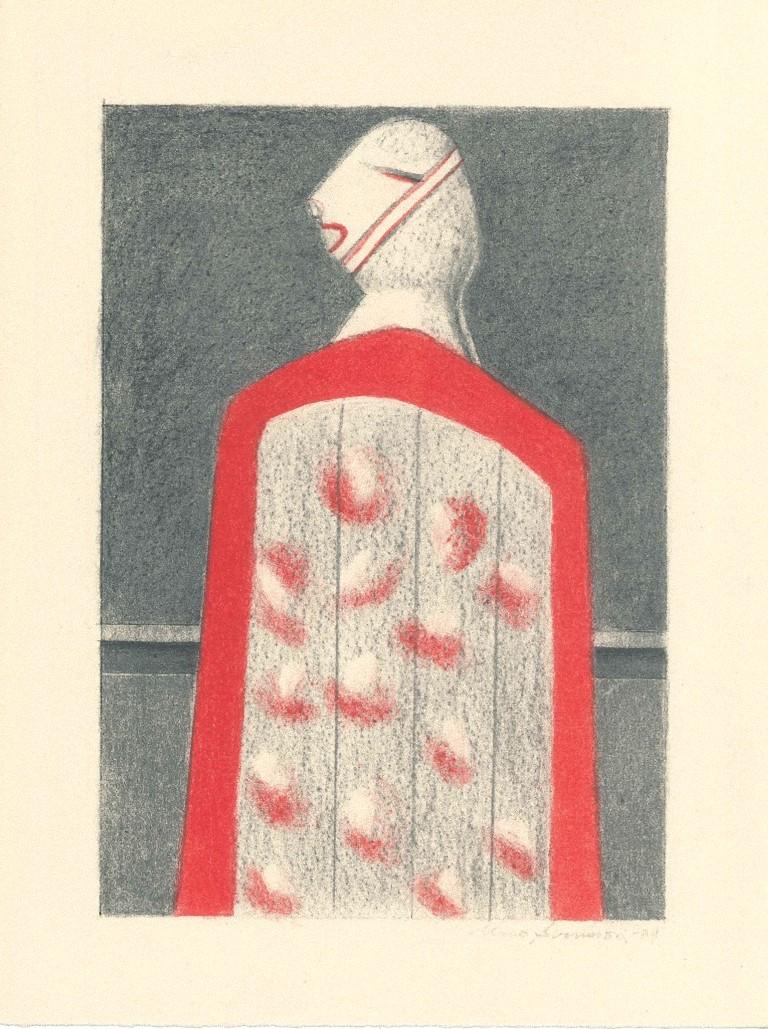Pablo PicassoPablo Picasso - Painter and His Model - Original Lithograph 1962
1962
About the Item
- Creator:Pablo Picasso (1881-1973, Spanish)
- Creation Year:1962
- Dimensions:Height: 15.36 in (39 cm)Width: 11.82 in (30 cm)Depth: 0.04 in (1 mm)
- Medium:
- Movement & Style:
- Period:
- Condition:
- Gallery Location:Collonge Bellerive, Geneve, CH
- Reference Number:1stDibs: LU16129285222
Pablo Picasso
One of the most prolific and revolutionary artists the world has ever seen, Pablo Picasso had a tremendous impact on the development of 20th-century modern art. Although he is best known for his association with the Cubist movement, which he founded with Georges Braque, Picasso’s influence extends to Surrealism, neoclassicism and Expressionism.
“Every act of creation is, first of all, an act of destruction,” the Spanish artist proclaimed. In Picasso's Cubist paintings, he emphasizes the two-dimensionality of the canvas, breaking with conventions regarding perspective, foreshortening and proportion. Picasso was inspired by Iberian and African tribal art. One of his most famous pre-Cubist works is Les Demoiselles d’Avignon (1907), a painting considered immoral and shocking at the time for its depiction of nude women whose faces resemble Iberian tribal masks.
Picasso made many portraits in this style, most often of the women in his life, their expressively colored faces composed of geometric shards of surface planes. In Woman in a Hat (Olga), 1935, he painted his first wife as an assemblage of abstract forms, leaving the viewer to decipher the subject through the contrasting colors and shapes. Picasso was a tireless artist, creating more than 20,000 paintings, drawings, prints, ceramics and sculptures. Tracing his life’s work reveals the progression of modern art, on which he had an unparalleled influence.
Browse an expansive collection of Pablo Picasso's art on 1stDibs.
- ShippingRetrieving quote...Ships From: Collonge Bellerive, Geneve, Switzerland
- Return PolicyA return for this item may be initiated within 7 days of delivery.
- Valerio Adami - Jacques Derrida - Original Signed LithographBy Valerio AdamiLocated in Collonge Bellerive, Geneve, CHValerio Adami Jacques Derrida's Portrait Original Signed Lithograph Signed and Numbered Dimensions: 90 x 60 cm Edition: 50Category
Early 2000s Modern Portrait Prints
MaterialsLithograph
- Pablo Picasso - The Ballet Dancer - Original LithographBy Pablo PicassoLocated in Collonge Bellerive, Geneve, CHPablo Picasso - Original Lithograph Title: The Ballet Dancer Dimensions: 32 x 24 cm 1954 Reference: Bloch 767 Frontispiece for the book "Le Ballet" (Paris: Editions Hachet, 1954) by...Category
1950s Modern Portrait Prints
MaterialsLithograph
- Marc Chagall - Meeting of Ruth and Boaz - Original LithographBy Marc ChagallLocated in Collonge Bellerive, Geneve, CHMarc Chagall, Original Lithograh depicting an instant of the Bible. Technique: Original lithograph in colours (Mourlot no. 234) On the reverse: another black and white original litho...Category
1960s Modern Figurative Prints
MaterialsLithograph
- Jean Cocteau - Antigone - Original LithographBy Jean CocteauLocated in Collonge Bellerive, Geneve, CHOriginal Lithograph by Jean Cocteau Title: Antigone From "Théâtre" Portfolio, 1957 Edition: 207 / 8800 Dimensions: 22.5 x 15.5 cm Jean Cocteau Writer, artist and film director Jean Cocteau was one of the most influential creative figures in the Parisian avant-garde between the two World Wars. “The poet never asks for admiration; he wants to be believed.” —Jean Cocteau Synopsis Jean Cocteau was born on July 5, 1889, in Maisons-Laffitte, France. He spent most of his life in Paris, where he became part of the artistic avant-garde and was known for his variety of accomplishments. Over a 50-year career, he wrote poetry, novels and plays; created illustrations, paintings and other art objects; and directed influential films, including The Beauty and the Beast and Orpheus. He died on October 11, 1963. Early Life and Literary Debut Jean Cocteau was born on July 5, 1889, in Maisons-Laffitte, France, a village 12 miles outside Paris, to Georges and Eugénie (née) Lecomte Cocteau. He and his two older siblings were brought up in comfortable household in Paris, where they were introduced to the arts by their parents. Their father, a lawyer and amateur artist, committed suicide in 1898. After his father's death, Cocteau was raised by his mother and his maternal grandfather. He attended school at the Lycée de Condorcet in Paris and he showed an early talent for writing. When he was just 18, his poetry was read aloud in performance arranged by the well-known actor Edouard de Max, and he became the toast of literary Paris. His first book of poems, La Lampe d'Aladin (Aladdin's Lamp), was published a year later, in 1909. Cocteau and the Parisian Avant-Garde In the 1910s, Cocteau formed friendships with many prominent members of the Parisian avant-garde, including writer Guillaume Apollinaire and artists Amedeo Modigliani and Pablo Picasso. He was so impressed by seeing the dancer Vaslav Nijinsky perform with the Ballets Russes that he met the company's founder, Sergei Diaghilev, and asked to work with him. Cocteau designed posters for the Ballets Russe, and in 1917 he was one of the collaborators on the ballet Parade: Cocteau wrote the story, Erik Satie composed the music, Léonide Massine choreographed the dance and Picasso designed the set and costumes. Cocteau's activities of the 1920s were remarkably varied. He composed opera libretti for several composers. He published collections of poetry and illustrations as well as a novel inspired by his experiences during World War I. He staged a ballet called Le Boeuf Sur le Toit (The Ox on the Roof) and directed modern adaptations of several classic dramas. He promoted the work of young writer Raymond Radiguet...Category
1950s Modern Portrait Prints
MaterialsLithograph
- Alexander Calder - Original Lithograph - Behind the MirrorBy Alexander CalderLocated in Collonge Bellerive, Geneve, CHAlexander Calder - Original Lithograph - Behind the Mirror 1 Original lithograph created in 1976 Framed Dimensions: 38 x 28 cm Source: Derrière le miroir (DLM), n°221, 1976 Alexand...Category
1970s Modern Portrait Prints
MaterialsLithograph
- Pablo Picasso - The Painter - Original LithographBy Pablo PicassoLocated in Collonge Bellerive, Geneve, CHPablo Picasso - Original Lithograph Title: Painter and his Model From the illustrated book "Regards sur Paris" (Paris: André Sauret, 1962) Edition of 180 Individual prints were not s...Category
1960s Modern Portrait Prints
MaterialsLithograph
- Japanese General - Lithograph by Auguste Wahlen - 1844Located in Roma, ITJapanese General is a lithograph made by Auguste Wahlen in 1844. Hand colored. Good condition. At the center of the artwork is the original title "General Japonais". The work is ...Category
1840s Modern Figurative Prints
MaterialsLithograph
- Ainos - Lithograph by Auguste Wahlen - 1844Located in Roma, ITAinos is a lithograph made by Auguste Wahlen in 1844. Hand colored. Good condition. At the center of the artwork is the original title "Ainos". The work is part of Suite Moeurs, ...Category
1840s Modern Figurative Prints
MaterialsLithograph
- Alfred Bendiner, ...And So..., 1948, Republican Convention nominating DeweyBy Alfred BendinerLocated in New York, NYThe full title really should be ...And So I Give Your The Next President of the United States. The scene is the Republican Convention, in Philadelphia, in 1948. There are so many fas...Category
Mid-20th Century American Modern Portrait Prints
MaterialsLithograph
- Family of Japanese Fishermen - Lithograph by Auguste Wahlen - 1844Located in Roma, ITFamily of Japanese Fishermen is a lithograph made by Auguste Wahlen in 1844. Hand colored. Good condition. At the center of the artwork is the original title "Famille de Pecheurs ...Category
1840s Modern Figurative Prints
MaterialsLithograph
- Figure - Lithograph by Alfonso Avanessian - 1989Located in Roma, ITFigure is an original lithograph on ivory-colored cardboard, realized by Alfonso Avanessian in 1989. Hand-signed and unnumbered, on the lower righ...Category
1980s Modern Portrait Prints
MaterialsLithograph
- Japanese Rider - Lithograph by Auguste Wahlen - 1844Located in Roma, ITJapanese Rider is a lithograph made by Auguste Wahlen in 1844. Hand colored. Good condition. At the center of the artwork is the original title "Cavalier Japonais". The work i...Category
1840s Modern Figurative Prints
MaterialsLithograph
Recently Viewed
View AllRead More
Science Uncovers Hidden Truths behind Young Pablo Picasso’s Blue Period
From 1901 to 1904, Picasso limited his palette to bluish hues in producing some of his most famous early works. A new show looks at the recycled materials, hidden underpaintings, surprising influences and bohemian lifestyle that led to their creation.
Who Are the Most Popular Artists on 1stdibs?
Learn the stories of some of the world's most recognizable artworks and their makers.






